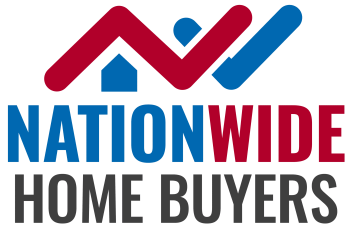Understanding what factors can make a house difficult to sell is essential for homeowners looking to put their property on the market. It’s no secret that certain aspects of a home may appeal more to buyers than others, and this can significantly impact how quickly and at what price the house will be sold. In order to ensure success in selling your home, it’s crucial to identify any potential challenges or drawbacks that could hinder its saleability. Let’s dive into some key components that contribute towards making a house harder to sell.- Location: One of the most significant factors affecting a home’s saleability is its location.Properties situated near busy roads, airports or industrial areas tend not perform as well compared with homes located in quieter suburban neighborhoods.Homes located closeby desirable amenities such as schools, shopping centers and parks generally attract more potential buyers.- Condition: The condition of your home plays an important role in determining whether it will be easy or challengingto sell. Properties with outdated features or major repairs required are less appealing and may turn off interested parties.On the other hand, newly updated properties with modern fixtures and appliances often garner higher interest from prospective buyers.- Competition: Another factor worth considering when understanding what makes a house harder
Identifying Factors that Make a House Unsellable
Are you a homeowner looking to sell your property? Are you worried about how long it will take for potential buyers to show interest in your house? If so, then understanding what makes a house harder to sell is essential. There are several factors that can contribute to reducing the appeal of your home on the market, and as an AI copywriting expert trained in real estate knowledge, I am here to guide you through identifying these crucial elements. So let’s dive into this topic together and discover what could be hindering the successful sale of your home.
Issues with Location
-Based ServiceLocation-based services have greatly benefitted individuals, businesses and organizations by providing real-time location information for a variety of purposes such as navigation, targeted advertising, emergency response and social networking. However, these services also raise concerns regarding privacy, security and misuse of personal data. As these services often rely on tracking an individual’s whereabouts through their mobile devices or GPS-enabled technology, there is potential for sensitive information to be accessed without the user’s knowledge or consent. Additionally, inaccurate location data can lead to misdirected emergency responses or unintended exposure of private locations. Furthermore, with the increasing use of location-based apps in various industries like retail and transportation comes risks such as unauthorized access to customer data which could result in identity theft or fraud. Therefore it is important for users to carefully consider the implications before sharing their location with these types of services.
Unappealing Home Design
Unappealing home design is a major turn-off for both homeowners and visitors alike. It can make the space feel claustrophobic, outdated, or simply uninviting. A poorly designed home lacks functionality and fails to create a cohesive flow between rooms. Clashing colors, mismatched furniture, and clutter can also contribute to an unappealing design. Not only does it fail to impress guests, but it can also lead to dissatisfaction and frustration for the residents who have to live in such a space on a daily basis. Ultimately, an unappealing home design not only affects the aesthetic appeal of a house but also its overall comfort and livability.
Outdated or Damaged Infrastructure
Outdated or damaged infrastructure can pose a significant threat to the functioning of a society. Infrastructure that has not been updated or maintained properly can lead to safety hazards, disruptions in daily life and economic losses. In developed countries, aging infrastructure such as roads, bridges and water systems is a major concern with the potential for collapse or malfunction due to wear and tear over time. This poses risks not only for individuals but also businesses relying on these systems for transportation and operations. Furthermore, outdated technology may hinder progress in terms of efficiency and sustainability which could result in increased costs both financially as well as environmentally. It is therefore crucial for governments to prioritize investments towards upgrading outdated infrastructure in order to ensure the safety and wellbeing of its citizens while promoting sustainable growth.
How House Resale Value is Affected
The resale value of a house is greatly affected by various factors such as location, condition, and market trends. Properties in desirable locations with good schools, easy access to amenities, and low crime rates tend to have higher resale values. The overall condition of the house also plays a crucial role in determining its worth. A well-maintained home with modern upgrades and features can attract more potential buyers and command a higher price compared to one that requires extensive repairs or renovations. Additionally, the current state of the real estate market can significantly impact the resale value of a house. In times when there is high demand for properties but limited supply, houses are likely to sell at premium prices whereas during an economic downturn or oversaturated housing market, sellers may struggle to get their desired asking price. Therefore it’s important for homeowners looking to sell their property in the future to consider these various factors that can affect their home’s resale value.
Impact of Poor Maintenance on Resale Value
Poor maintenance can have a significant impact on the resale value of any property. When a home or other type of property is not properly maintained, it begins to show signs of wear and tear over time. This could include peeling paint, cracked walls and floors, leaky roofs, broken appliances and outdated features. These issues not only make the property less aesthetically appealing but they also raise red flags for potential buyers who may fear that there are deeper underlying problems with the structure itself. As a result, poor maintenance can decrease the overall desirability and perceived value of a property in the eyes of potential buyers. Additionally, when neglected repairs pile up over time they become more expensive to fix which means sellers will often have to lower their asking price in order to attract buyers willing to take on these needed renovations.
Effect of Neighborhood Factors on House Value
The value of a house is not solely determined by its physical features and amenities, but also by the surrounding neighborhood. The quality of schools, access to public transportation, crime rates, and proximity to popular attractions or commercial areas can all impact the overall desirability and therefore value of a property. A safe and well-maintained neighborhood with good schools will likely attract more potential buyers willing to pay a premium for the desirable location. On the other hand, an area with high crime rates or poorly rated schools may decrease demand for properties in that neighborhood and result in lower house values. Additionally, factors such as noise pollution from nearby highways or industrial buildings can also negatively affect a property’s worth. Ultimately, it is important for homeowners to consider not only their own home’s attributes but also how their neighborhood environment may influence future market value when making real estate decisions.
The Influence of Market Conditions on House Resale Value
Market conditions play a significant role in determining the resale value of houses. When the real estate market is experiencing high demand and low inventory, house prices tend to increase due to competition among buyers. This can result in higher resale values for homeowners looking to sell their properties. On the other hand, during times of economic recession or when interest rates are high, there may be a decrease in demand for houses leading to lower resale values. Additionally, factors such as location, school ratings, and amenities also influence market conditions and consequently impact house resale values. Homeowners should keep an eye on current market trends before putting their property up for sale if they want to maximize its value.
Overcoming the Challenges in Selling a Hard-to-Sell House
Selling a hard-to-sell house can be a daunting task that comes with numerous challenges. These challenges include finding potential buyers, setting the right price, and addressing any issues or repairs needed. However, there are steps that can be taken to overcome these obstacles and successfully sell your property. Firstly, it is important to work closely with an experienced real estate agent who has knowledge of the local market and expertise in selling difficult properties. They can provide valuable guidance on pricing strategies and marketing tactics to attract potential buyers. Additionally, investing in staging or making necessary renovations can make your home more visually appealing to prospective buyers. Finally, patience is key when selling a challenging property as it may take longer than usual for the right buyer to come along.
Effective Marketing Strategies for Unsellable Houses
Effective marketing strategies are crucial for selling any property, especially unsellable houses. The first step in this process is to identify the target market and understand their needs and preferences. This can be achieved through thorough research and analysis of potential buyers in the local area or a specific demographic group. Once the target market is identified, it’s essential to highlight the unique features of the house that make it stand out from others on the market. Utilizing various marketing channels such as social media platforms, real estate websites, flyers, and open houses can help increase visibility and attract potential buyers. Additionally, pricing plays a significant role in making an unsellable house more attractive to buyers; therefore, conducting a comparative market analysis to determine an appropriate price point is vital. Lastly, professional photography can enhance visual appeal and capture attention when promoting unsellable homes online or via print mediums.
Renovations and Repairs to Increase Resale Value
Renovations and repairs are essential in increasing the resale value of a property. When potential buyers are looking for a new home, they want to invest in a place that is visually appealing, functional and well-maintained. By making necessary upgrades or fixing any damages, homeowners can make their property more desirable and potentially increase its market value. This could include updating outdated fixtures, repairing any structural issues or giving the space a fresh coat of paint. A renovated home not only looks more attractive but also gives the impression that it has been taken care of properly which creates confidence in potential buyers to pay top dollar for it. Whether big or small, investing time and money into renovations and repairs can lead to higher offers from interested buyers when selling your home.
Working with Real Estate Professionals
Working with real estate professionals can greatly benefit individuals in the process of buying, selling or renting a property. These professionals are highly knowledgeable about current market trends and have access to various resources that help them provide valuable insights and guidance to their clients. They also possess strong negotiation skills which can be crucial in getting the best deal for their clients. Additionally, working with a real estate professional helps save time and effort as they handle all aspects of the transaction on behalf of their clients, including paperwork and legal formalities. With their expertise and experience, these professionals ensure a smooth and hassle-free experience for both buyers and sellers alike.
Case Study: Types of Houses that are Easier or Harder to Sell
When it comes to selling a house, there are many factors that can affect its marketability. In the case study of types of houses that are easier or harder to sell, some key findings were uncovered. One factor that greatly influences how quickly a house sells is its location – properties in highly desirable areas tend to have an easier time on the market compared to those in less desirable locations. Additionally, certain features such as updated kitchens and bathrooms tend to increase the appeal of a house and make it more attractive for potential buyers. On the other hand, houses with unique designs or unconventional layouts may be more difficult to sell as they may not fit into the traditional preferences of most homebuyers. Overall, understanding these different factors can help sellers better prepare their homes for sale and target specific buyer demographics for optimal success in today’s competitive real estate market.
Analysis of Most Marketable House Styles
The most marketable house styles in today’s real estate market are those that combine modern functionality with timeless charm. The classic colonial style home, for example, remains a top choice among buyers due to its symmetrical design and versatile floor plan. This type of home appeals to both traditionalists and those seeking an open layout for entertaining. Additionally, contemporary homes featuring clean lines and minimalist designs have gained popularity as they offer a sleek and airy aesthetic that is highly sought after by younger generations. Another popular option is the craftsman style house which exudes warmth through its use of natural materials such as wood and stone while also offering practical features like built-in storage solutions. Ultimately, the most marketable house styles are those that strike the perfect balance between aesthetics and functionality, catering to a wide range of tastes and needs in today’s competitive housing market.
Insights on Least Sellable House Types
After analyzing the real estate market, it can be observed that there are certain types of houses that tend to have lower demand and longer selling periods. The least sellable house types include those with outdated designs or features, such as shag carpeting and popcorn ceilings. Additionally, homes located in undesirable neighborhoods or areas with high crime rates also face challenges when trying to sell on the market. Another factor is housing size – smaller homes (such as studios or one-bedroom apartments) may have a limited pool of potential buyers compared to larger family-sized homes. Lastly, unique properties like unconventional architecture or specialized rooms (e.g., home theaters) may appeal to a niche population rather than a broad range of buyers.
Role of Trends in House Style Preferences
Trends play a significant role in shaping our house style preferences. Whether it’s the latest interior design styles or home decor trends, they influence our choices and aesthetics when it comes to decorating our homes. As new designs and concepts emerge, people often feel compelled to incorporate them into their own living spaces, creating a constant cycle of evolving house styles. Additionally, following the current trends allows homeowners to stay up-to-date with modern tastes and maintain a sense of relevance in their community. However, while keeping up with trends can be exciting and visually appealing, it is essential for individuals to also prioritize their personal taste and functionality when designing their homes. Ultimately, striking a balance between incorporating trendy elements while staying true to one’s unique style is crucial in creating a well-designed home that reflects individuality.






